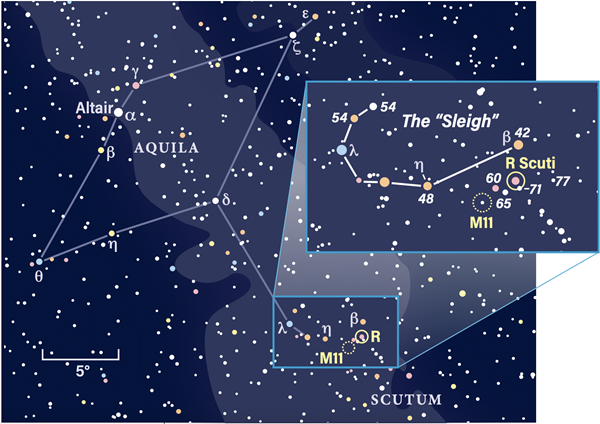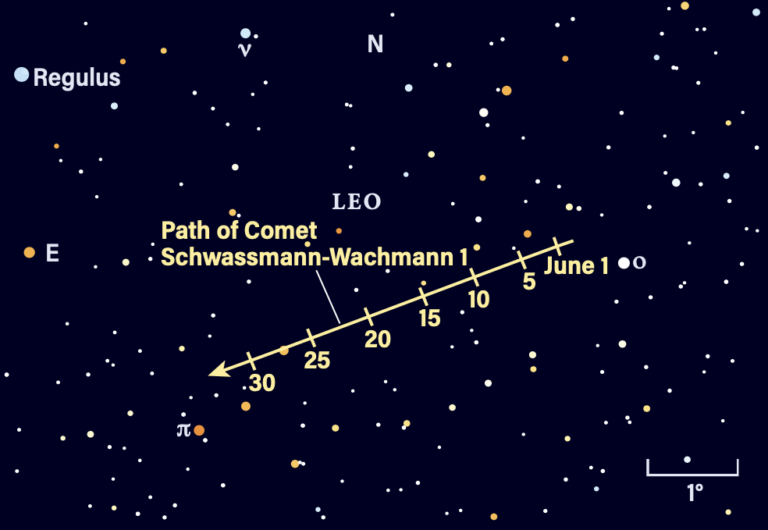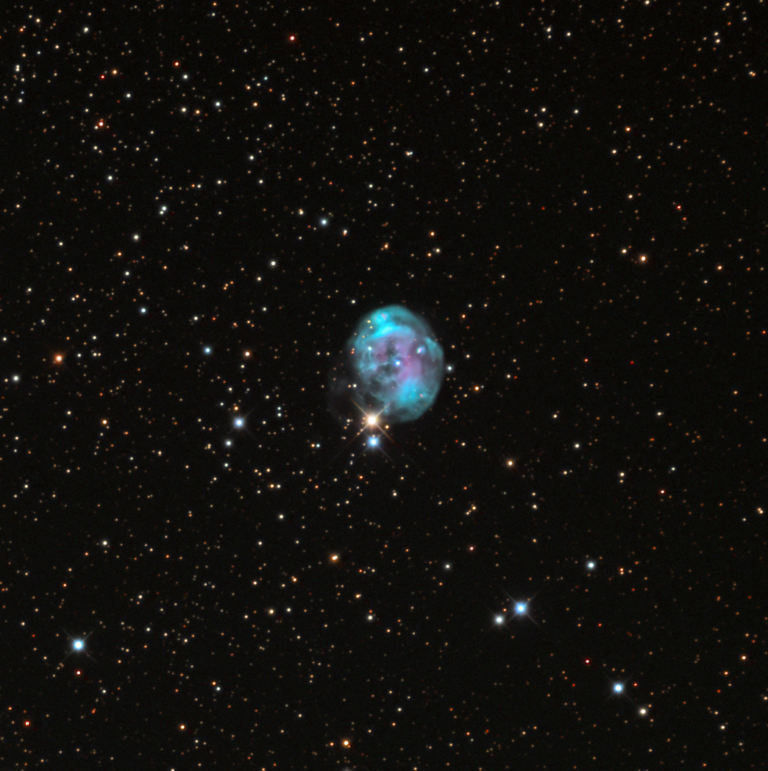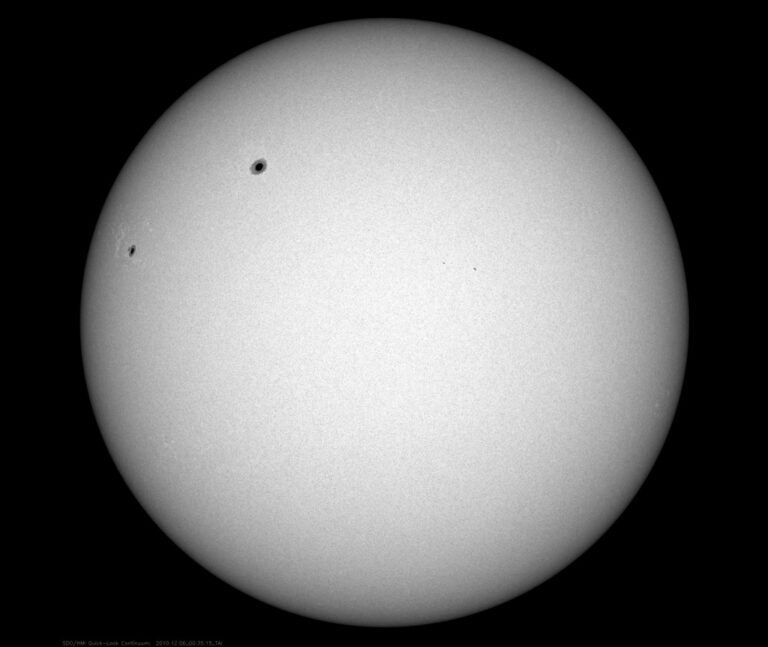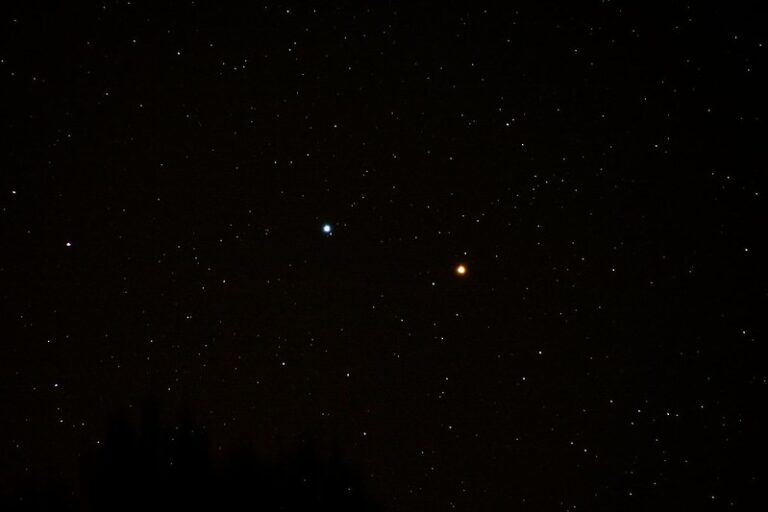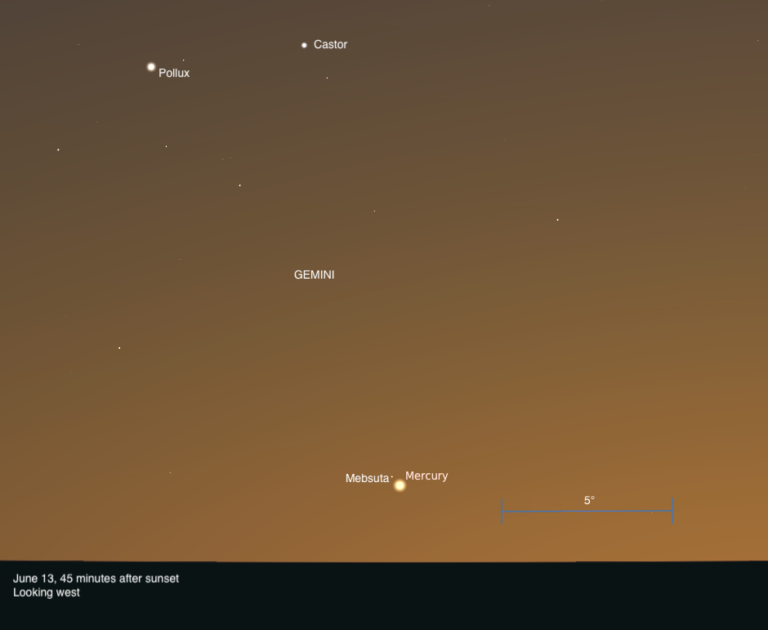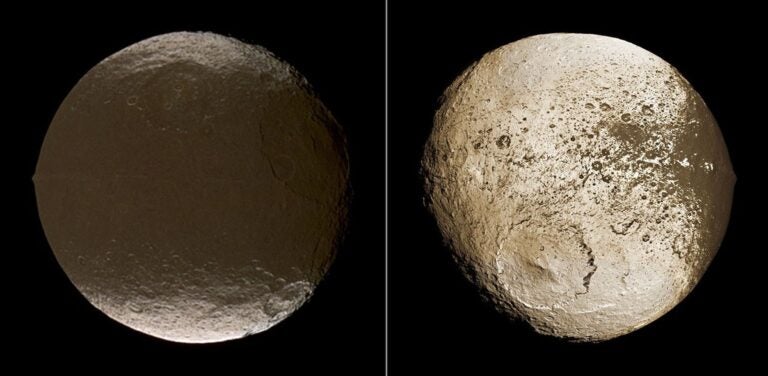I timed this column to coincide with a feature article in this issue about the American Association of Variable Star Observers (AAVSO), written by the organization’s director, Stella Kafka. If you haven’t already read it, turn to page 54 and do so now. Then come back here, and I’ll give you a basic rundown on how to observe visual variable stars.
Let me begin by sharing my own experience with observing variable stars and the AAVSO. I joined the AAVSO back in the summer of 1980, thanks to a chance meeting at Stellafane with then-director Janet Mattei. Her contagious enthusiasm for variable star observing convinced me to become a member. Since then, I’ve forwarded nearly 80,000 visual brightness estimates of variable stars to the organization. Of the many variables I’ve monitored, one of my favorites is the pulsating yellow giant R Scuti. It was the first variable star for which I sent brightness estimates to the AAVSO, and it’s one of the easiest to observe. Now, I’d like to introduce you to this engaging, dynamic star.
R Scuti was one of the earliest variable stars discovered, with its brightness changes first reported in 1795 by English astronomer Edward Pigott. It’s categorized as a RV Tauri variable — a group of pulsating stars that exhibit alternating shallow and deep dips in brightness. At its brightest, R Scuti shines somewhere between magnitudes 4.5 and 5.0. The dips alternate between magnitudes 6.5 to 7.0 and 8.0 to 9.0. That behavior is irregular, too, even grinding to a standstill now and then. An average cycle between deep minima spans about 146 days. You can view the whole show with nothing more than a standard pair of binoculars or a small, rich-field scope. I strongly urge you to try your hand at tracking the changes in R Scuti’s brightness over the next few months.
Your first step is to find R Scuti. Before going outside, get a feel for its general location by referring to our Star Dome map on page 34. R Scuti’s parent constellation, Scutum, is rather faint and obscure, but you can find it southwest of the prominent constellation Aquila. A line traced from Gamma (γ) Aquilae to Delta (δ) Aquilae and extended roughly an equal distance beyond brings you to Lambda (λ) Aquilae, which is a few degrees east and slightly north of the open cluster M11. R Scuti is conveniently located near this cluster. In fact, on the Star Dome map, R Scuti is the unlabeled star that appears near the upper-right portion of the dashed circle marking M11.
Once outside under the real night sky, trek from Gamma to Lambda Aquilae with your binoculars. Lambda is the brightest star in a sleigh-shaped asterism that ends with the star Beta (β) Scuti. M11, which appears as a fuzzy patch in binoculars, lies about 2° south-southeast (below and slightly left) of Beta. Immediately northwest (above right) of M11 is a small trapezium of stars that includes R Scuti. This entire group is shown in the close-up chart on this page.
After you’ve found R Scuti, it’s time to estimate its brightness. The chart shows the magnitudes of other nearby stars, with decimal points omitted to avoid being mistaken for stars themselves. Make your brightness estimate of R Scuti by seeking a neighboring star of the same magnitude. If that’s not possible, and it usually isn’t, look for “bracketing” stars — one that’s slightly brighter and one that’s slightly fainter than your target — then interpolate the magnitude. Because R Scuti’s variations occur over months, there’s no need to observe it every night; clouds won’t allow that luxury anyway. I generally check out R Scuti once every five to seven nights.
Don’t forget to be patient! Your first encounter with R Scuti may require 30 minutes to locate the star and estimate its brightness. But the next time you try, you’ll likely accomplish the task in half the time. Eventually, you’ll be able to complete the entire process in minutes. Each visit, note the calendar date, time, and magnitude on a log sheet. Also keep in mind that AAVSO observers use the Julian date and time.
Having spent a half a century as an avid amateur astronomer, I guess you could say I’ve “been around the galaxy.” However, if asked what is the most rewarding of my astronomical endeavors, I would say it’s variable star observing — especially considering my decades-long association with the AAVSO. That all began with R Scuti, and I hope this ever-changing yellow giant will likewise introduce you to a lifelong adventure with variable stars.
Questions, comments, or suggestions? Email me at gchaple@hotmail.com. Next month: a small telescope tour of Lyra. Clear skies!

